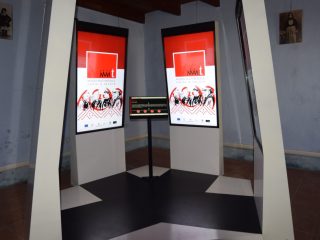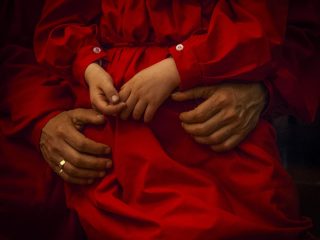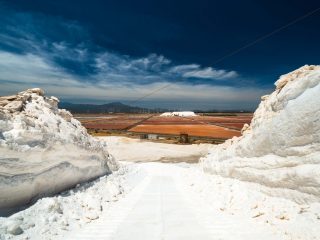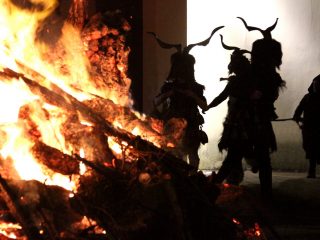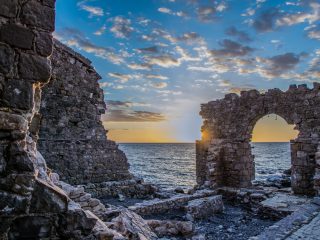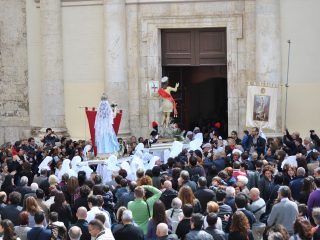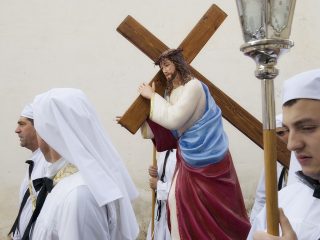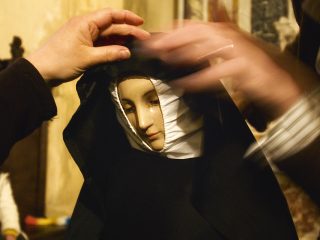The Ottana traditional carnival, in dialect “Carrasegare”, boasts ancient origins and preserves intact its traditions which reflect the peasant’s life. Indeed, all the masks and rituals reflect scenes from the agricultural and sheep rearing life: ploughing, sowing, picking and looking after animals. At the same time, we can see clear signs of the legacy of festivities in honour of Dionysus, which were held at the end of March in ancient Greece.
Celebrations start on the evening of the 16 January (Sant’Antonio Abate), with a religious ceremony which ends in the square with the blessing of the bonfire (“su Ogulone”). This is the point at which the typical masks of Carrasegare make their first appearance.
It is at this point that the priest hands over “S’Affuente” to the people. “S’Affuente” is a copper plate with embossed work and decorations like bunches of grapes, flowers and oriental-style crosses and writing in Alemannic German letters. This copper plate, most likely of Byzantine origin, is used as a musical instrument and struck with an iron key. The same plate is also present in the Holy Week rituals in Ottana.
The actual festival is held on Sunday, Monday and carnival Tuesday; the key players of the carrasegare are the “Sos Merdules”: the “Merdule” is the person who looks after, tames and tends to the animal; he wears a wooden mask, velvet clothing and is covered in sheep’s wool. Then there are the “Sos Boes”, wooden masks with decorations created using a chisel and featuring a bovine horn. They are worn by men and women of all ages bearing bronze cow bells held by a leather belt. They represent the animal which rebels against its owner (Merdule), who tries to tame it with “su mazuccu” (stick) or with a leather whip, known as “sa socca”.
Other masks depict the other animals led by the “Merdules”, for example “Sos Porcos” (the pigs), “Sos Molentes” (the donkeys), “Sos Cherbos” (the stags) and “Sos Caprolos” (roe deer).
‘‘Sa filonzana” (spinner) generally wears a wooden mask but sometimes has their face covered in soot. The clothing is that of an old widow, with a skirt and black shawl and a cushion tied to their back to create a kind of hump. The figure seems to represent a spinner because they are holding loose wool and scissors in their hand. “Sa filonzana” walks among the crowd predicting the future and threatening to cut the thread of life, like a Parca, depending on the quality and quantity of wine offered.
The masks pass through the streets in the town with movements in rhythm with the racket of the cowbells and accompanied by the noise of ‘‘Su orriu”. This is a primitive musical instrument shaped like a cylinder and produced in cork. The upper part is covered with a piece of animal skin from which hangs a strap soaked in tar. This is run up and down inside the instrument by hand and produces a sound which frightens both men and animals.
”Sas Mascheras Serias” (the serious masks) invade the streets, with a variety of clothes and colours. These figures are mute, their faces are covered with a cloth handkerchief, and they are dressed in an extremely imaginative and eccentric fashion. Each mask is different: in some cases, “sas mascheras serias” wear old bed covers, in others sheets or even rugs and towels in a variety of colours. They move forward jumping and dancing, to represent the carefreeness of life.
The festival is rounded off with ‘‘Su ballu tzoppu’’ the traditional dance of the Carrasegare of Ottana to the rhythm of ”S’affuente”.
One other important aspect of the festival are the typical local dishes and those specially prepared for the festival; for example, “sas savadas” (pasta filled with fried cheese and served with honey and sugar), “sa pasta violada” (dessert of pasta made with lard and then fried), “sas origliettas” (a dessert of pasta cut into thin strips, then fried and it too dressed with honey). Always present is the carasau bread, cheese and local wines.








